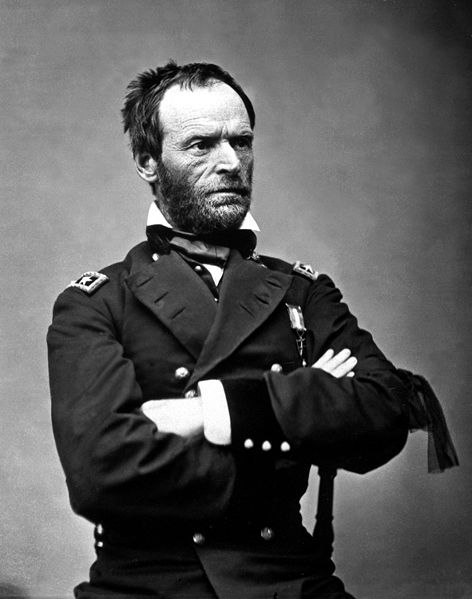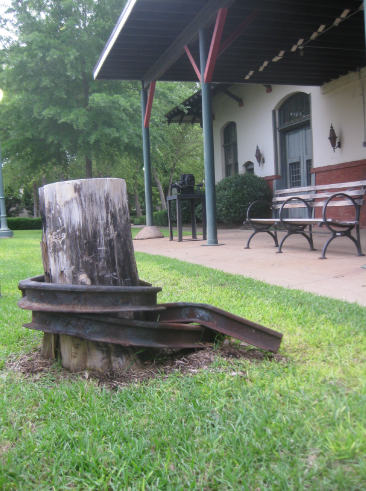Sherman’s Bow Ties

During our tour of the Western Theater last month, Chris, Steph and I stopped in Meridian, Mississippi. Located in the eastern part of the state, the town was the junction of the Mobile and Ohio and the Jackson and Selma Railroads and a logistical center for the Confederates. In February, 1864 it became a focal point of a relatively forgotten campaign led by Maj. Gen. William Tecumseh Sherman. On February 3, Sherman, along with elements from the XVI and XVII Corps left Vicksburg with Meridian as their target. Sherman hoped that this raid would not only deprive the Confederates of the use of the railroads, but to wreak havoc on the agricultural resources supplying the enemy between Vicksburg and Meridian in the hopes of neutralizing any enemy threat to Union commerce and movement along the Mississippi River.
In fact, Sherman’s brand of warfare and his legacy are the topic of my talk at the Second Annual Emerging Civil War Symposium. You may register for the symposium here.
On Valentine’s Day, the lead elements of Sherman’s force marched into Meridian. The next several days were spent tearing up the railroad as well as destroying anything of value that could be used by the Confederates in the town. The soldiers were so thorough it prompted Sherman to write in his official report that “Meridian…no longer exists.” Their work complete, Sherman started his columns on the return trip on February 20. By March 6, they were safely back in Vicksburg.
Today, there is a local Civil War Trail of Meridian and its vicinity. Each stop details various aspects of the town’s involvement in the conflict. One of the stops is devoted to Sherman’s raid in 1864 and is located off Front Street behind the Railroad Museum. It is titled “Sherman’s Bow Ties” and consists of a tree stump with iron rails wrapped around it.
Captain Andrew Hickenlooper, Sherman’s Chief Engineer wrote that “destroying the railroad…was effected by taking up the rails and piling the ties together 5 or 6 feet wide and 4 feet high, balancing the rails on their sides with weights on each end, and setting fire to the piles. The rails would invariably bend from 30 to 40 degrees.” The fire that Hickenlooper mentions would be lit in the center of the pile. When the middle section of the rail had become red hot and malleable, Union soldiers would man each end and twist the heated section around trees or telegraph poles, thus giving the appearance of either a Bow or Neck Tie.

As a child, I recall 1941 Bannerman catalogue my father had, which along with all kinds of military surplus items, had “Sherman neck ties” for sale.
That is pretty cool. Thank you for sharing!
I’m surprised you didn’t mention this was the precursor and trial run of the March to the Sea or are you saving that for the Symposium or another article.
Hi Tim! I am indeed saving it for the Symposium as well as future writing endeavors.